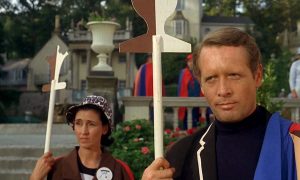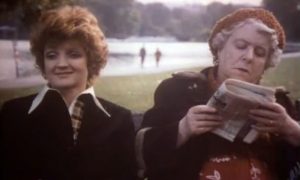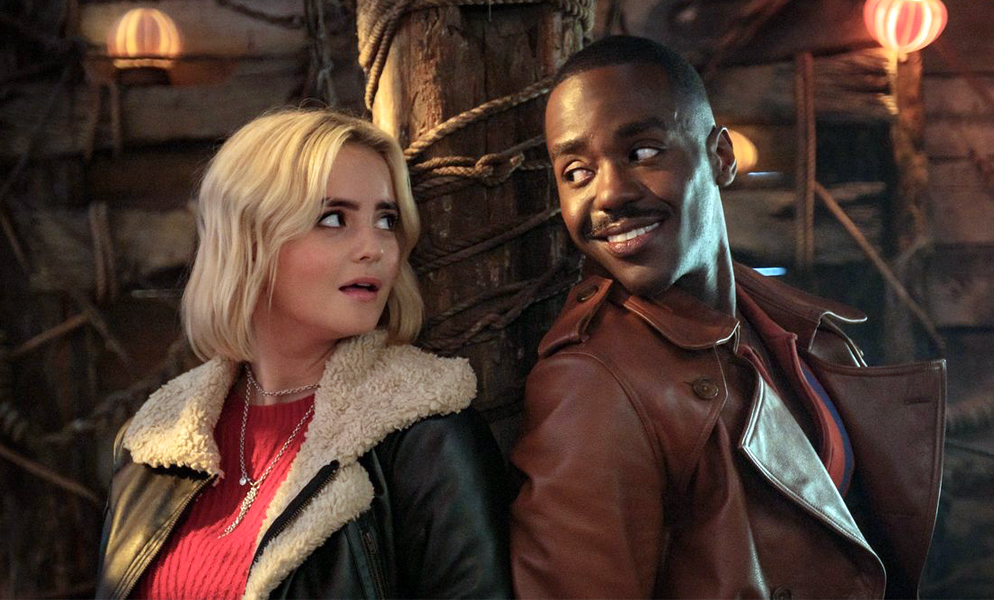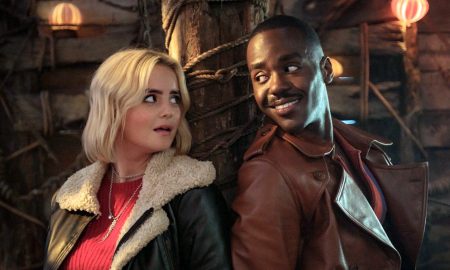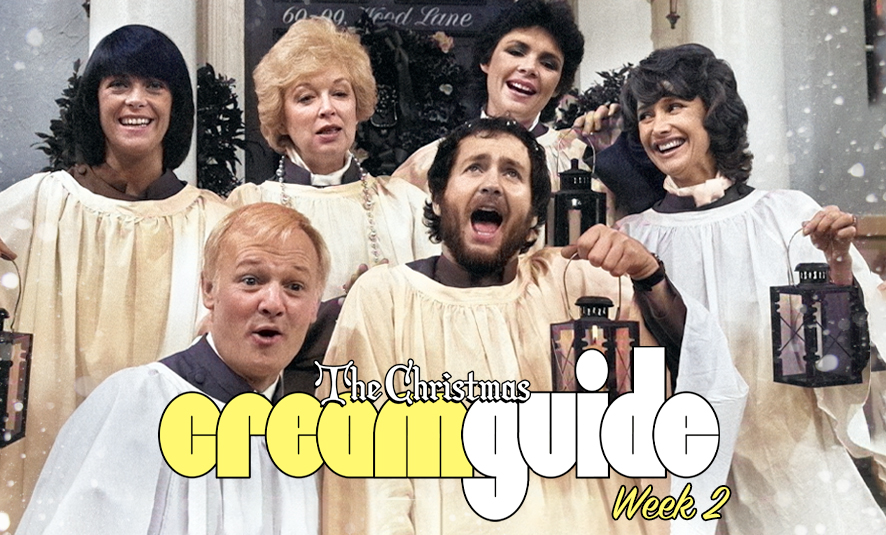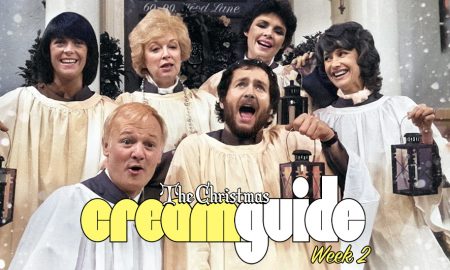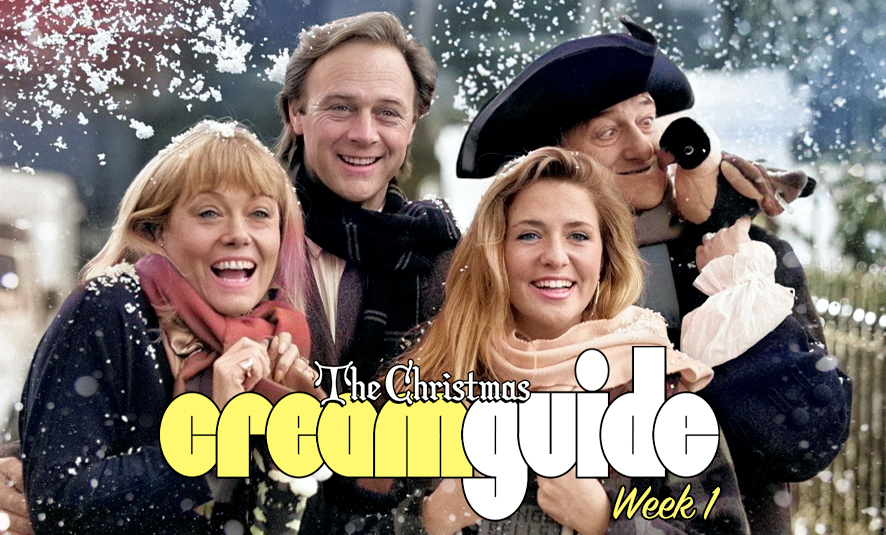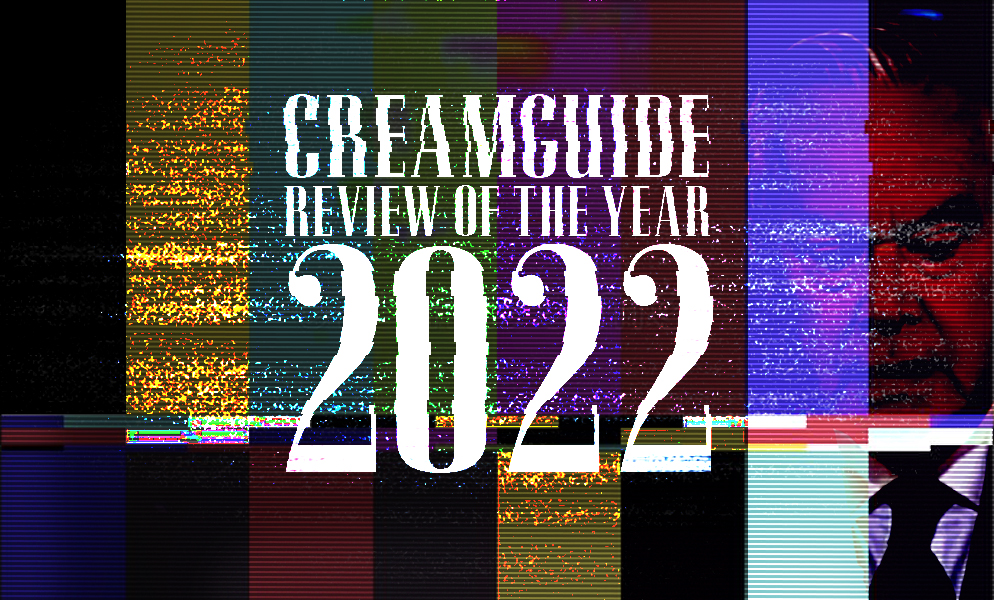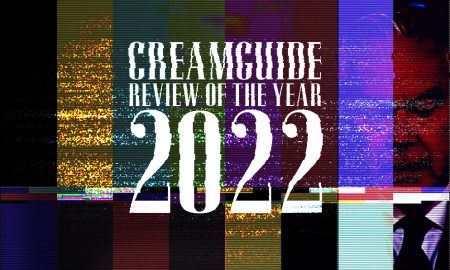Towards the end of the 1960s, many films took it upon themselves to pastiche, satirise or otherwise put the boot into the increasingly self-absorbed remnants of London’s ‘swinging’ culture, but none did it with as much panache, cheek and messy abandon as Smashing Time. Scripted by monocular jazz surrealist George Melly while he was writing Revolt Into Style, his definitive look at the ‘selling out’ of pop culture, it takes many of the sharp insights of that book, wraps them up in a pleasingly corny ‘Northern girls come good’ fairy-tale, and adds a liberal dollop of pie-based slapstick.
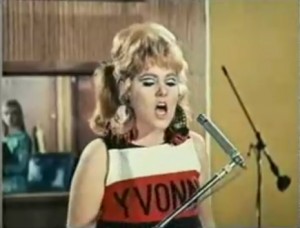 |
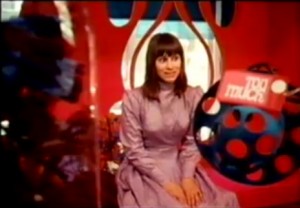 |
Tall, flame-haired, trend-obsessed Yvonne (Lynn Redgrave) and mousy, pragmatic Brenda (Rita Tushingham) arrive on the train from Oop North, desperate to grab a piece of the swinging world of pop, glamour and ‘six foot circular beds with black sheets’ which Yvonne has read avidly about in MiniTrends magazine. Promptly getting their money nicked, they find themselves unable to pay for bread and scrape in Arthur Mullard’s greasy spoon, so Brenda is left to wash up while Yvonne capers blithely through Carnaby Street, singing a delightfully tuneless ode to the pop epicentre (‘Carnaby Street!/Carnaby Street!/Carnaby-arnaby-Carnaby Street!’) whereupon she’s promptly chatted up by moustachioed fashion photographer Michael York, beginning the girls’ string of random associations with the hip and happening.
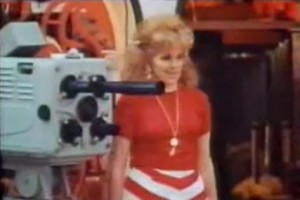 |
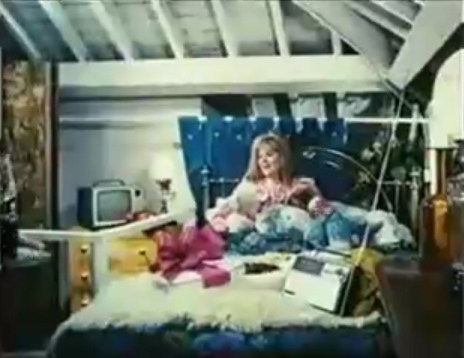 |
York sets Yvonne up via a joke Evening Standard fashion shoot, mocking her provincial gaucheness as ‘The Girl Who got it Wrong’. Brenda embroils the cafe’s patrons (including Corrie’s Eddie Yates) in a sauce/paint/liquid manure fight. Bonzos-related artist ‘Professor’ Bruce Lacey appears as a mad sculptor exhibiting skeletal robots designed to destroy all their owners’ other objets d’art (‘The end of civilization in your sixty-foot, L-shaped drawing room!’) Irene Handl is the youth-mistrusting owner of an antique fur shop (‘Come in ‘ere, them young Mods, asking for animal paws, then while yer back’s turned a nice bit o’skunk vanishes up their knickers!’)
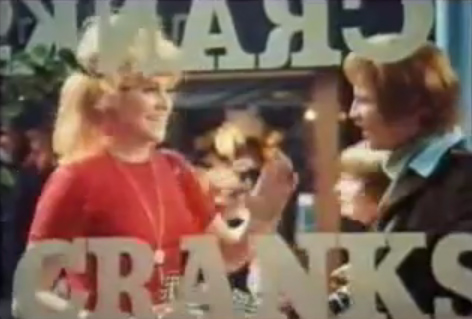 |
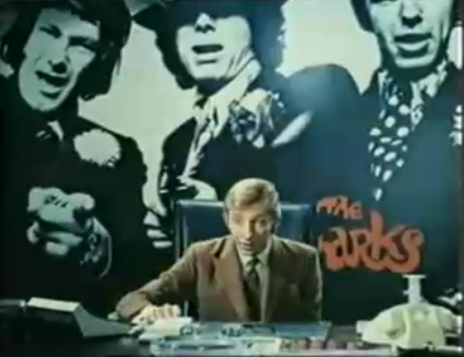 |
Lascivious toff Ian Carmichael picks up Yvonne in a nightclub and takes her back to his plush bachelor pad with nookie in mind, to her consternation (‘Going the whole way is really square and out of touch. Besides, I never ‘ave.’) Anna Quayle employs Brenda in her boutique, Too Much (which employs a hearse as delivery van), only to sack her after she treats the place as a proper shop rather than a hip hang-out (‘She made us all buy something before we parked our botties!’)
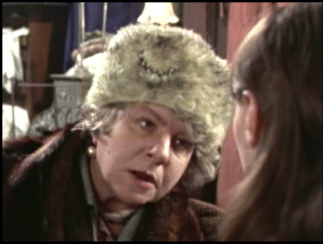 |
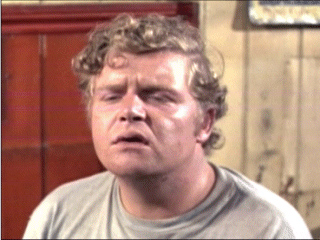 |
Finally luck comes their way as their Grudge Street lodgings are demolished in the name of Candid Camera-like TV programme You Can’t Help Laughing, presented by Peter Jones as a patronising, oleaginous hybrid of Bob Monkhouse, Hughie Greene and David Frost (‘He’s got a lovely speaking voice you know, and he sounds very nice when he isn’t pretending to be common!’) The girls get 10,000 pounds for their trouble, and immediately invest it in getting famous. Under York’s wing, Brenda becomes a model and the face of Direct Action perfume, posing in a cynical TV ad intercut with riot footage. Yvonne is marketed by pop impresario Jeremy ‘Allo Allo‘ Lloyd as a sub-Lulu singer (‘Psychedelic, but not turned on. Friendly, unspoilt… and a virgin’) with wall-of-sound-backed hit I’m Still So Young (‘I can’t sing, but I’m young/Can’t do a thing, but I’m young/I’m a fool/But I’m cool…’)
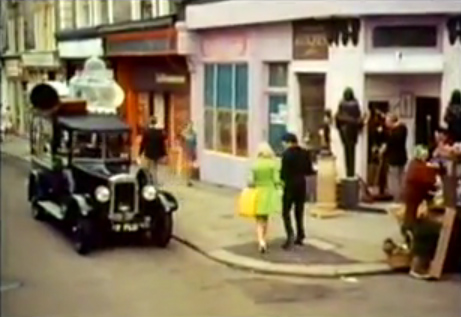 |
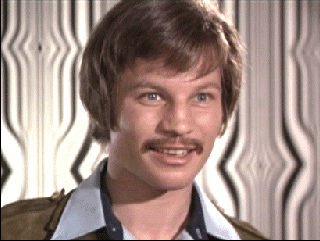 |
Now mutual enemies, the girls live the high life of ‘pacy’ split-level apartments, doorstep deliveries of Johnnie Walker and meeting the Bishop of Runcorn. Eventually things come to a head in a party at the top of the Post Office Tower (‘the scene with the built-in trip!’), when Brenda, bored witless by the liquid lightshow and synchronised heartless frugging, sets the controls from ‘slow’ to ‘very fast’, and blows the whole town’s circuits, before the pair make up and head back Northwards for a proper youth of chip suppers, lovebites and bus shelter romance.
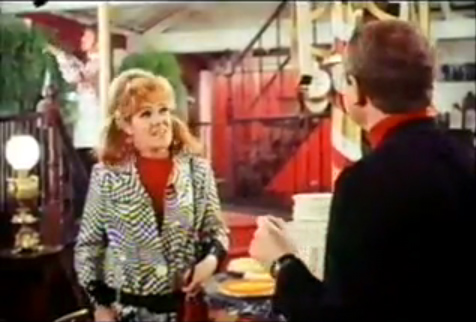 |
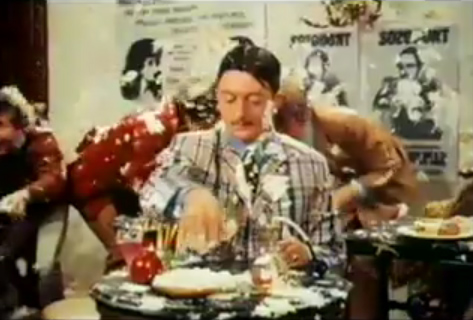 |
Redgrave and La Tush are, quite simply, made for their roles. Awed by the in-crowd, but still able to fight back with volleys of ultrasonically high-pitched, 100MPH banter when the occasion demands, they’re more rounded victim-heroes than you’ll find in many a more serious ‘London’s a bit of a bummer’ drama. They’re simultaneously naive and more clued-up than their southern hosts, as is the script, using the timeless devices of saucy put-downs and all-out slapstick to deflate the scene’s self-regarding pomposity. While the cafe patrons heartily join in with the messy mayhem, the uptight clientele of Sweeney Todd’s Eating House (a dessert-only version of an East End pie shop with the waitresses dressed as Victorian strumpets) can only stand rigid, trying deperately to look cool as a volley of flans hits their solemn fizzogs. It’s the sight and sound of the real spirit of the ’60s – the unabashed, classless, energetic spirit – triumphing over the self-conscious, snobbish and conservative clique it had become by the decade’s end. And all with the skillful facial deployment of a large gooseberry syllabub tart. What a fabulous, knockout scene!


